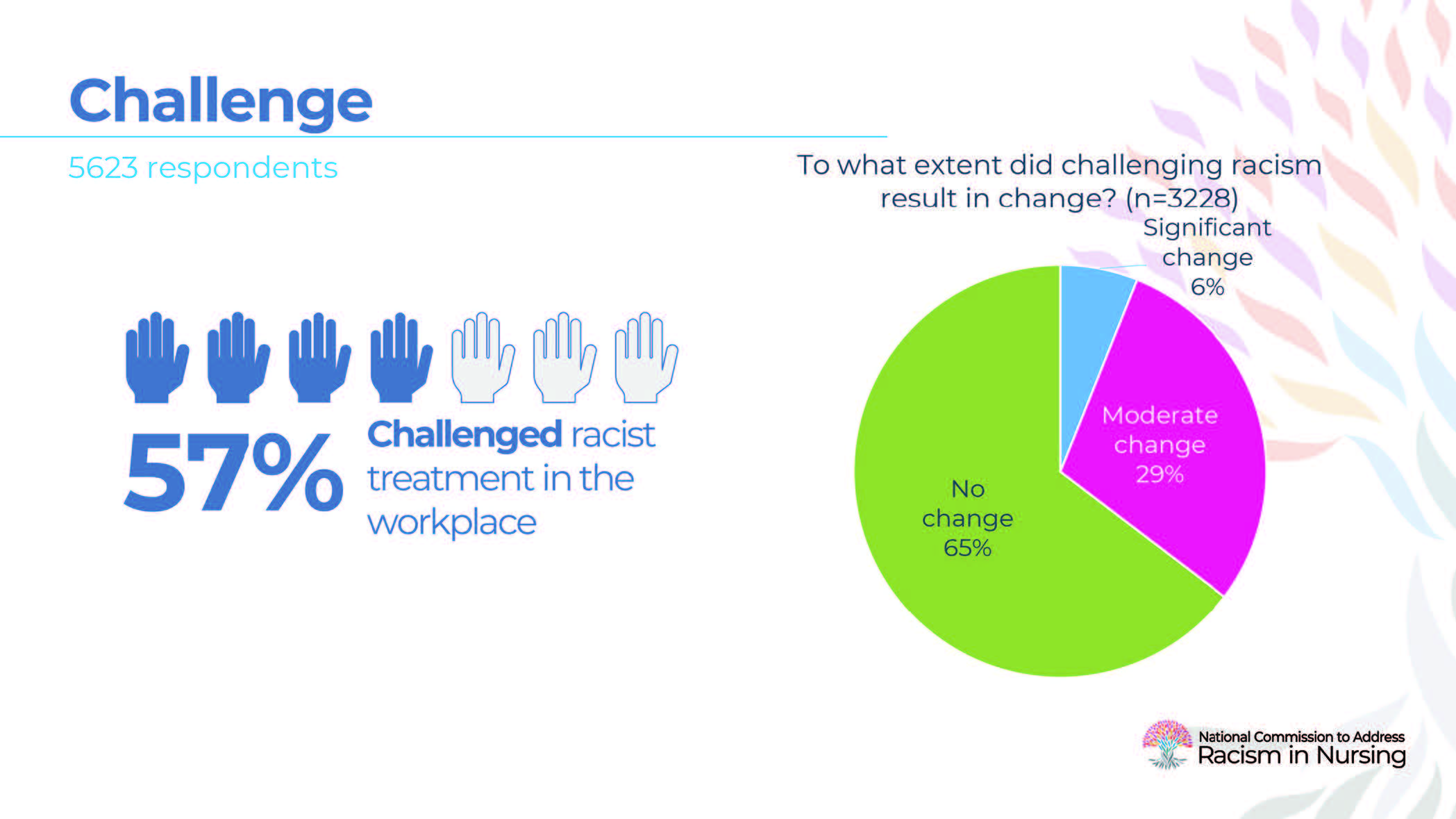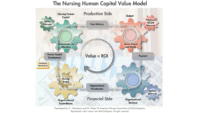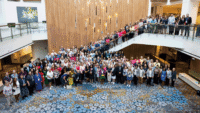Allyship is a frequently used term that may not be fully understood. The National Institutes of Health considers allyship a lifelong process in which meaningful relationships build trust and accountability. The National Commission to Address Racism in Nursing (the Commission) defines allyship as an ethical duty intended to eliminate harmful acts, words, and deeds and support those not traditionally heard. In promoting actionable allyship, the Commission aims to give voice to those who might not always be invited to speak.
In January 2022, the Commission distributed the results of a nationwide survey on racism, with over 5,600 nurse respondents. The survey, which explored how racism affects the perceptions and lived experiences of nurses and their patients, showed that 57% of nurses had personally experienced racism in their workplace from a peer (66%), patient (63%), or manager or supervisor (60%). In comparison to their White colleagues, nurses of color reported experiencing racism in significantly higher percentages (White 28% vs. Black 92%, Asian 73%, and Hispanic 69%). In addition, 75% of nurses reported witnessing a racist act in their workplace. This was equally true among all races and all age groups, indicating that most nurses are exposed to racism of some kind during their professional tenure.
Commission survey finds racist acts prevalent in nursing
Leadership roadmap: Allyship, flexibility, and intention
Related to allyship, 57% of respondents said they had challenged racist treatment they witnessed in their workplace. Based on ethnic groups, a high percentage of Black respondents indicated no outcome resulting from their challenge. Some even experienced demotion, being let go, transferred, or isolated and ostracized. Conversely, Asian respondents indicated a positive outcome from confronting racism in the workplace.
Examining responses by age, nurses younger than 25 years were the largest group that challenged racism, while nurses 55 years or older reported the most positive outcomes. When asked whether change resulted from their challenge, 6% of respondents noted that a significant change took place such as the offender ceasing their behavior, being verbally reprimanded, or being fired. Another 29% indicated that a moderate change took place such as formation of a Diversity Equity and Inclusion Council, necessary conversations, increased awareness training, or educational opportunities. A full 65% of respondents indicated that no change took place. Repondents described no change as including administrators not being responsive or ignoring allegations. Notably, some respondents indicated that they’d been retaliated against by their organization or coworkers for challenging a racist act, leaving them more vulnerable for having spoken out.
Two nurses, both members of the Commission, share their allyship experiences and reflections. Being an ally may not always be comfortable, but it’s essential. Allyship is a never-ending commitment, but it rewards us all with a richer work environment.
Allyship over 3 decades—Anna Valdez


Throughout my 31 years in nursing, I needed to be an ally many times. I’ve also experienced times when I needed an ally. One day, while working as an emergency nurse, I was sitting at the nurses’ station and asked a colleague to hand me something. She responded, “Get it yourself. I am not your [N word].” I was shocked as I did not expect to hear something so egregious at work. The nurse knew that my family is multiracial, including being Black, so realized this would be offensive to me. As I began to rise from my chair, a physician I worked with gently put his hands on my shoulders as if to say, “You can sit. I have this.” He told the nurse that he wouldn’t tolerate racism or the use of that disgusting word. A respiratory therapist spoke up immediately after him to clarify that he also wouldn’t tolerate that type of language. I said nothing because I didn’t have to speak. My colleagues had delivered the message.
Later in my career, I was in a meeting with several nurses, many of whom would say they’re allies. One of the nurses said the same hurtful word I’d heard before. Again, I was stunned. The nurses in attendance knew my family, but none of them said anything as my heart pounded in my throat. I was visibly upset and shaking. The roundtable discussion continued with one nurse after the next carrying on like the word had never been spoken. When it was my turn to speak, I had to explain to the nurse that there was no situation or context where it was ever acceptable to use that word. Then, I left the meeting feeling alone, unsupported, and hurt.
I share these examples because being an ally is more than having good feelings about others or not actively seeking to cause harm. Allyship requires action at the time the harm occurs. In the first instance, my colleagues demonstrated that they wouldn’t tolerate racism and derogatory language. They didn’t say it was offensive to me. They said it was offensive to them. Their immediate action set the tone for the department, and I felt supported. In the second example, by failing to speak up, the nurses told the people in the room, including me, that they condoned the harmful language. Their lack of action told me they didn’t see or care about me enough to speak up. I know that wasn’t the message they intended to send, but regardless of intention, that was the impact of their inaction.
Reflections on allyship—Blake Smith


Allyship is a personal journey driven by consistent self-reflection, leading to the needed self-awareness to contribute to our collective society. No one individual can fully understand the complexities in which others live. To achieve the collective inclusivity and safety we strive for together takes internal vulnerability and grace. On the journey of bettering oneself, it’s important not to fear making mistakes and to have the humility to ask for forgiveness when those you’ve offended request it.
Allyship is not about protecting others but rather assisting in creating an environment for all to feel safe and valued. Allyship means striving for a culture where everyone can be themselves and be valued without fear of moral suffering or spiritual murder, which is a direct outcome of racism. For example, in a patient care scenario, when a patient commits a racial assault on a staff member, we’ve been taught historically in our professional education that the patient’s safety should always come first. In this scenario, however, the patient is never in danger. More accurately, the staff member is the one who needs safety.
As a colleague, the best course of action wouldn’t be to protect this nurse and reassign her a different patient but rather to quietly pull her aside and simply inform her that she’s not alone in witnessing the assault. If you didn’t see the event yourself, validate the seriousness of the situation and ask her where her mind is about her future safety involving this patient and what she believes should be the next steps to find the best resolution. Once you’ve listened to your colleague, collaborate on the next steps to support one another in fulfilling our obligations to our patients and, more importantly, our duty to one another for our safety.
— Ruth Francis is senior policy advisor at the American Nurses Association. Anna Valdez, an ANA\California member, is a professor of nursing at Sonoma State University in Rohnert Park, California. Blake Smith, a Nebraska Nurses Association member, is a clinical documentation senior analyst at Nebraska Medicine in Omaha. Valdez and Smith are members of the National Commission to Address Racism in Nursing.
American Nurse Journal. 2024; 19(2). Doi: 10.51256/ANJ022436
References
The National Commission to Address Racism in Nursing. January 25, 2021. nursing-world.org/commission-to-address-racism-in-nursing
The National Commission to Address Racism in Nursing Survey Report and infographic. Racism’s Impact in Nursing. January 25, 2022. nursingworld.org/survey-on-racism
Wells A, White B. Why is allyship important? National Institutes of Health Office of Equity, Diversity, and Inclusion. February 4, 2021. edi.nih.gov/blog/communities/why-allyship-important

















